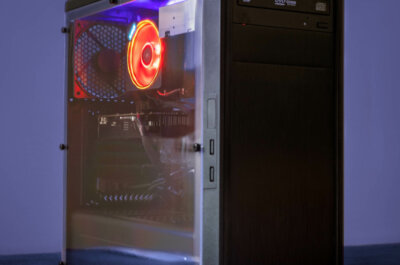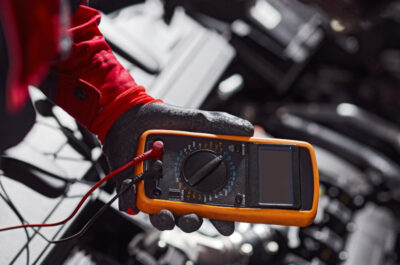Mary Huang arbeitet an der Schnittstelle zwischen Mode- und Software-Design. Sie gründete Continuum Fashion mit ihrer Partnerin und besten Freundin Jenna Fizel. Das Projekt ist ein experimentales Label, das Marys Interesse an der Mode und ihrem Hintergrund aus der Software- und Medienbranche vereinen soll. Das Label produziert u.a. LED-Kleider, User-generated Couture und 3D-Printing-Mode. Im Rahmen der NEXT12 habe ich Mary Huang einmal zu Continuum Fashion interviewt. Den englischen Originalton des Interviews lest Ihr hier.
Hi Mary, thanks for talking to Netzpiloten today
Hello, nice to meet you!
So, you’re at this intersection between fashion and software
design. How did that come about personally for you?
 I mean, personally, I actually have a background in more like
I mean, personally, I actually have a background in more like
media and interaction design and so does my partner. I mean, she does
a lot of installations, design work, she has a background in
architecture, so neither of us studied fashion design. I’d always done
a lot of experimental fashion design, but in a way it’s nice to have
an outside perspective; especially since if you look at fashion design
how the training and how the industry is built up, most fashion
designers don’t work digitally at all even and it’s an industry that
is very well grounded in craft which is great. I mean, there’s a lot
of beautiful craftsmanship, but there’s not necessarily the kind of,
like, tradition of using computers at all.
Do you think using a computer really changes the aesthetic
of what you produce in comparison to the stuff produced by hand?
I mean, yes, in the work that we do… since we do kind of
personally do things that we like, we kind of have this innate digital
aesthetic because we want to reflect the tools that we’re using. But
we also believe that it’s not about creating the look in a way, it’s a
bit the process. So the process of not just like the innate process of
writing code or making software or using 3D printing, but the process
of even making things in general or how do you get things out to the
public. I mean, technology as a whole is making it more accessible,
more democratic for people to realise ideas. And you can make
something, put it online, thousands of people will see it and the
market is also changing where a lot of fashion is built on this
Spring/Summer, Fall/Winter, but there is no reason to do that. You can
just constantly make new work and really that’s what people wanna see.
They just wanna see more new interesting things all the time.
Do you think it’s changing the dynamic between designers and
the product and consumers and the product?
Yes, I think if anything it’s becoming easier for independent
artists and creatives to do the work that they’re interested in doing,
which is great, because for us, like, for a lot of people who do
design, there is a slightly more art side and a slightly more business
side maybe and you have to decide where you are on that spectrum.
Fashion design has a lot of art to it out of any design industry. It’s
very much like this is the vision, this is the story of the
collection, but that’s high-end fashion and a lot of fashion that is
purchased is commercial fashion which has a very different pipeline.
It’s line guides and styles and mood boards that are done in a
completely different way. And as an independent you can decide how you
want to work in that. You know, you can decide whether you want to do
some things that are going to be more a consumer product but also some
things that are more experimental and art. But at the same time you’re
not pressured to have to sell ten thousand of something, you know. I
think it’s great that you can make products where the context is only,
like, maybe 10 or 1 or 100 and that just opens up more freedom for
creativity.
You founded Continuum Fashion with Jenna … ?
Jenna Fizel … She’s kind of, like, my best friend too.
What was the concept behind that?
In a way, right now we’re kind of like an experimental label. I
mean, right now, we’re just doing interesting ideas and in a way
figuring out where we want to be because we could also scale up. I
mean there’s a lot of potential to do more kind of web-based almost
content creation… Almost enabling a crowd-sourcing viewpoint on
fashion, because one of our initial ideas was to let people also just
like be able to design themselves and share it. On the other side
there is the more directly physical material level. So the last year
we spent a lot of time with 3D printing and this idea of making
physical things. So right now it’s kind of … we’re trying things
(laughing). But we want to take our time. Fashion sometimes, it can be
very fast. You know, there are designers who suddenly, they’re like
famous or something, but also the creative side is different then the
business side and we want to take the time to figure out the business
side as well. Like as a designer, it’s been a year now, and I know
that last year I was feeling like I don’t think I can run my own
business, like, let’s just take the time to do some interesting work
and then see where we go and right now, I feel like I know a little
more about business. So I know whether we want to scale or whether we
don’t want to scale and that’s a good thing – to take the time to
learn and to see what’s happening and to be open-minded to ideas.
Yeah! And you did recently this 3D bikini. Was that part of
this idea that you wanted to make it easy for people to make their own
stuff and this user-generated stuff?
I think the 3D printing… I mean the bikini was a slightly more
technology, material-based experiment. It was too consider whether you
could make wearable, more consumer-based products out of 3D printing
and we were aiming for actually more ready-to-wear. It’s not going to
be H&M, right? But ready-to-wear, in the sense that we spent effort to
do sizing. It’s actually easy to make something where you make one.
You make a photo. It’s great. It looks nice and then the next step is
to actually do sizing and when you start to do sizing is when you
start to bring an idea to the consumer market place. But we also found
when we did this, when we were trying to make it ready-to-wear but
then, like, some people were like „oh, this is art. You should sell it
for ten times the price“. And in a way, like, sometimes an idea is
more of an interesting idea that leads to other things. So with 3D
printing we have other ideas that we are going to do like accessories
is a little bit more direct. So this bracelet is a similar idea. It’s
the same material as the bikini, so it’s almost like a piece of it.
But then we make a bracelet instead of a bikini.
And that’s easier to do as well …
It’s ridiculously easy to make a bracelet. We did consider, in a
way, jewellery is true that even in fashion they make some things that
are for the runway and or for the editorial – it’s like the art – and
then they make some things that are the accessories or the t-shirts or
thing that are more the products. So the art supports the products and
vice versa. Although, for us we felt like wanted a slightly different
challenge too. We like the functional challenge and jewellery is very
ornamental, so we wanted to so shoes and spent the last year trying to
do shoes. So, I’m going to present that tomorrow (at Next). But it’s
new and we’re still working on it and it fits in with some of our
ideas well. On the side of enabling people to take part in the
creative process themselves. I mean we always have the idea to do kind
of these app interfaces, so introduce interactivity into fashion
design. So in terms of shoes, a very simple thing is, you see a pair
of shoes and they’re, like, five-inch heels and you’re like „ah, I
really want these, but, you know, maybe I should get, like, three/four
inches, that’s a little bit more practical“. And you can’t get it just
a little bit lower; you can’t choose the height of the heel. That
design has a fixed height. Sometimes a brand might do one high, one
low. I’ve seen that done, but you don’t have a gradient and that’s a
very simple thing. It’s not, like, design your own shoe, but it’s
just, like, let me pick how high I want it (laughing). And since we’re
making things just one by one, like order it, we make it, in that
model, we can do that. We can just let you choose the height and do
the sizing and on that level that’s the couture methodology, that’s
bespoke, where it’s like let’s adjust design a little to suit the
individual person. On a different idea, I mean, we have some other
ideas too where it gives you a little bit more of the design-your-own,
a little bit more DIY. So like, let’s say if you have a dress pattern,
like, let’s say this dress I’m wearing. If you get a print, like, just
the fabric is different, you can have an infinite variety of designs
from that same cut. There are a few very nice summer dresses and
always the seasonal prints. Sometimes looking at dresses, I want a
nice floral print and I look through so many and there’s not that many
interesting patterns sometimes because the tricky thing about printing
something is if you’re going to make 10,000, a 100,000 dresses you
have to go with a few printed patterns that you feel are going to be
acceptable to most people. But I want something specific and so if you
just let people put whatever pattern they want and maybe it also works
on the level that any photo you print on fabric, large-scale, will
look great! And thus you make it so that people can do great things
without much effort. It’s like instagram. Everything looks nice with a
little vintage filter, right? And you empower people to have a feeling
of accomplishment where it’s like „I did this, but it was easy too“.
(laughing)
Yeah, because sometimes I’m looking for shoes or something
and I have a very specific idea in my head of what I want. I find
things that are kind of like what I want but not quite. And it would
be difficult for me to make it myself. I could go to a dressmaker or
cobbler with my design but …
Yes! I think in the longer term that’s where we’d like to be, is
that aspect of people who enjoy fashion. You know, there’s a lot of
personality and there’s a lot of, you know, you have an idea of what
you want. A lot of brands think that „we will tell people what they
want“. The traditional view of fashion is the whole stylists and media
dictate what will be in this season and they spend a lot of time in
product development to find what is going to be in this season. But we
have the perspective that that doesn’t matter so much in a networked,
social world. I mean, let everyone figure out what they want and tell
there friends (laughing). It’s on a scale of one-to-one.
So there are lots of ways of integrating fashion and
technology and this idea of smart clothing and stuff like that. What
way do you think it will move forward?
I mean, there is definitely a different track. You can go with
technologies that make clothes, so kind of technologies that are
involved in the process of making something that you wear and then
technology that is embedded in clothes. I’ve done other work where
like we actually put LEDs in clothes and it’s, like, fun, you can wear
things that are electric. And, I think, actually the most interesting
work in this sector is by Nike. I really like the work and how it’s
like living data. So, personally I don’t know whether you’re going to
have the smartphone embedded in the jacket. To me that element is not
nearly so practical just because a phone is something you carry around
all the time. You can have like ten jackets. You’re not going to wear
the same jacket every day, so I don’t want my phone embedded into my
jacket. They’re two very different things. But if you look at the Nike
FuelBand where you have that data… You have something that you wear
that you can track all your data. That idea is interesting, because
once you have data what can you do with it? It would be great to be
able to something where like you have something that takes data, like
maybe something it’s something existing like your smartphone or maybe
it’s like a Nike thing that you have that attaches to your shoes or a
wristband but after you have data to be able to take that and then to
design something specifically for you. It’s almost clothing that would
evolve to suit you. Like if you look at shoes, you notice about shoes
people wear shoes differently depending on they stand. So a lot of the
time one side will be worn down more than the other side. What if you
could take data about how you walk and what your gait is and then be
able to feed that into your custom shoe design? I mean, that would be
really interesting. I mean I don’t even know enough about it to figure
out how to do it but I do know some things … like posture is
interesting and even wearing high heels, you can have comfortable high
heels, but they do change the way you walk, so there’s some amount of
research involved if you want to do this idea.
And just a final, personal question. What’s been your
inspiration in terms of fashion and technology?
Yeah, in terms of designers, my number one inspiration has
always been Miyake. Issey Miyake. His later work especially is more
research-oriented work where he had A-Poc, which is kind of a
single-knitted piece and Pleats Please. So he had this idea of very
process-oriented fashion design which was based on how do you condense
fashion design down to one piece of cloth that becomes the article of
clothing? How do you eliminate cutting, sewing, all those processes.
The idea how could you make clothes without sewing is a driving
influence, because really the technology behind making clothes hasn’t
really changed that much in the last 100 years but at the same time if
you look at Miyake, he is a man and he designed for largely the
Japanese demographic, which, you know, admittedly a lot of his designs
are not flattering for everyone and admittedly all of his designs
represent a very singular point of view and I think that being a
female it is actually different. Like, between Jenna and me, we
definitely do want to have this grounded, rigorous approach in which
we want to design for real women, not for runway models and I think
that especially in terms of society girls need role models who are not
runway models. It’s alway interesting to meet women who are
successful, who are driven and who are smart and I think one idea
we’ve always had is to do a collection in which all the photography
would be real women, so that would be the idea: this is made for the
individual and represents the individual.
Cool. Thanks for your time, Mary!
You’re welcome (laughing)
Artikel per E-Mail verschicken
Schlagwörter: continuum fashion, Design, fashion, Interview, led-dresses, mary huang, software, User-generated couture




1 comment